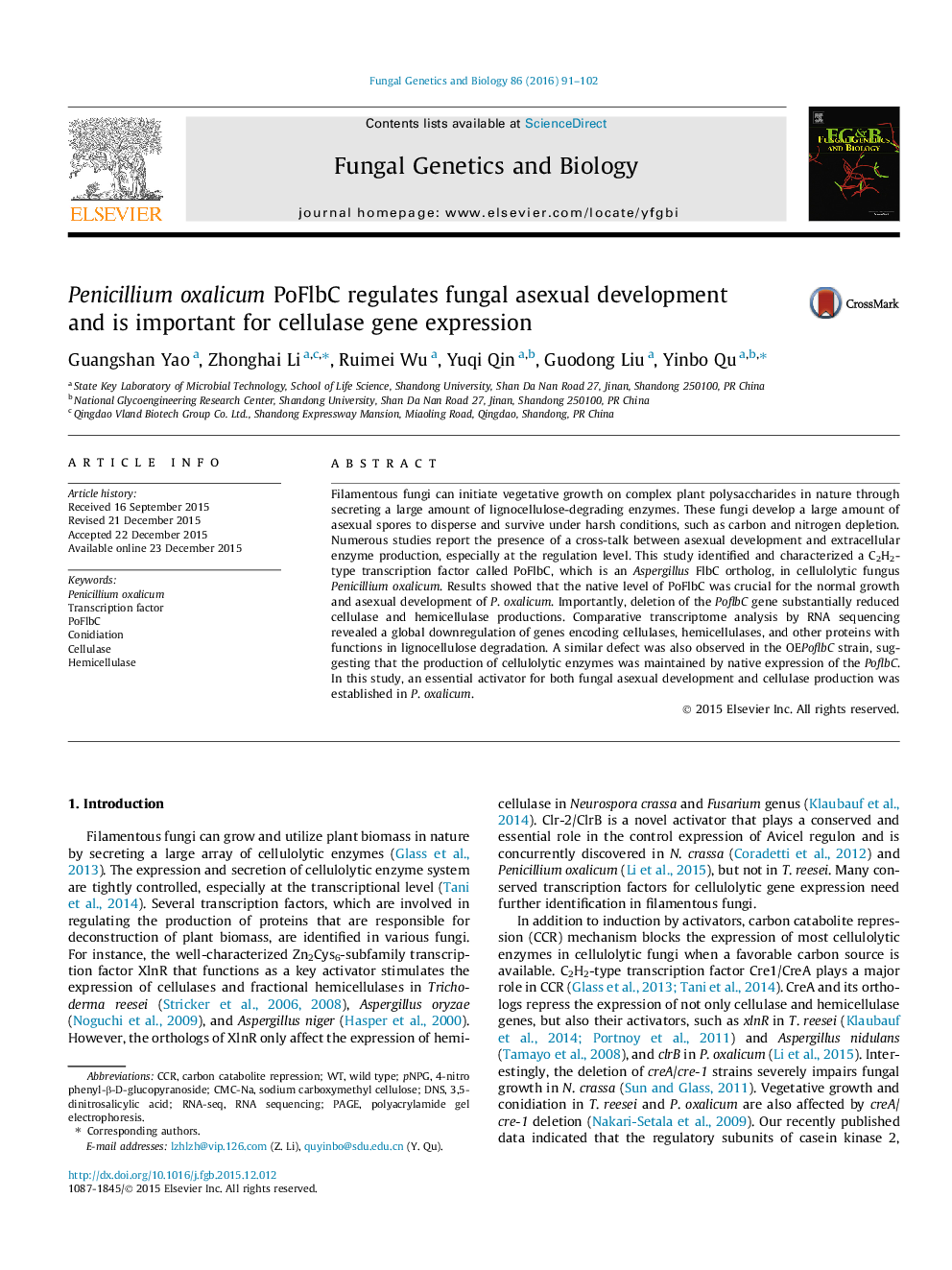| Article ID | Journal | Published Year | Pages | File Type |
|---|---|---|---|---|
| 8470609 | Fungal Genetics and Biology | 2016 | 12 Pages |
Abstract
Filamentous fungi can initiate vegetative growth on complex plant polysaccharides in nature through secreting a large amount of lignocellulose-degrading enzymes. These fungi develop a large amount of asexual spores to disperse and survive under harsh conditions, such as carbon and nitrogen depletion. Numerous studies report the presence of a cross-talk between asexual development and extracellular enzyme production, especially at the regulation level. This study identified and characterized a C2H2-type transcription factor called PoFlbC, which is an Aspergillus FlbC ortholog, in cellulolytic fungus Penicillium oxalicum. Results showed that the native level of PoFlbC was crucial for the normal growth and asexual development of P. oxalicum. Importantly, deletion of the PoflbC gene substantially reduced cellulase and hemicellulase productions. Comparative transcriptome analysis by RNA sequencing revealed a global downregulation of genes encoding cellulases, hemicellulases, and other proteins with functions in lignocellulose degradation. A similar defect was also observed in the OEPoflbC strain, suggesting that the production of cellulolytic enzymes was maintained by native expression of the PoflbC. In this study, an essential activator for both fungal asexual development and cellulase production was established in P. oxalicum.
Keywords
Related Topics
Life Sciences
Biochemistry, Genetics and Molecular Biology
Cell Biology
Authors
Guangshan Yao, Zhonghai Li, Ruimei Wu, Yuqi Qin, Guodong Liu, Yinbo Qu,
